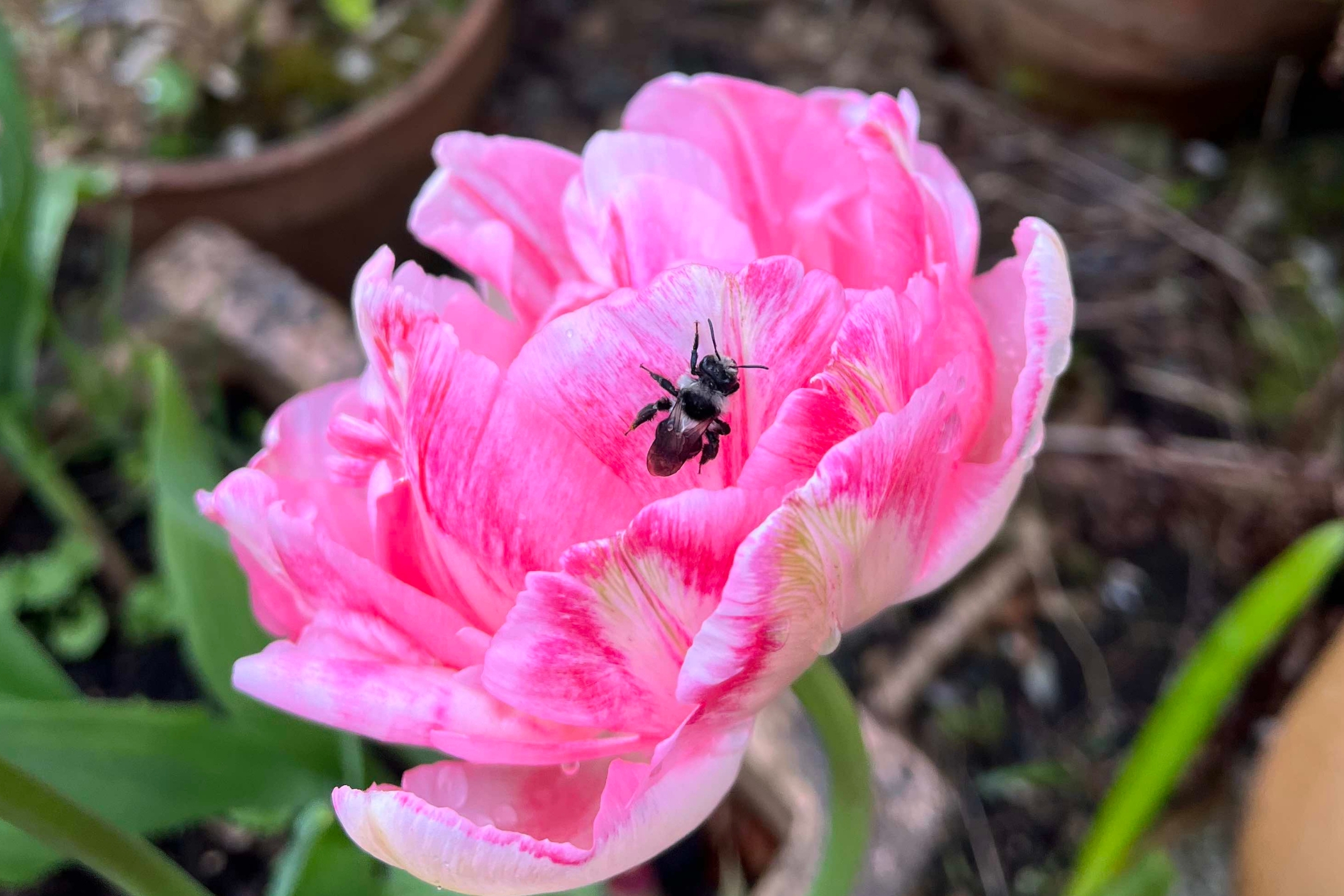8 things We Learned About Irish Bees

Wild Irish Bee
Did you know that 100 crops provide 90% of the world’s food? And 71 of those plant crops are pollinated by bees? So if bee species and populations are in danger – and they are – so are humans. We learned this at our recent webinar with The National Biodiversity Data Centre where we heard all about the All Ireland Pollinator Plan. We also learned about how well bees are faring in Ireland and what can we do to help them? Read on to find out some mind-blowing bee facts and the small actions that we can all take that yield BIG results to help these sensational little workers on their way. We also recommend that you listen back this webinar for a treasure trove of fascinating bee-dazzling information!
1. There Are 101 Wild Irish Bee Species.
In Ireland, we have 21 species of bumblebee and 80 solitary bee species. That’s 101 wild bee species. Those 80 solitary bee species are actually the workhorses of pollination.
2. One Third Of Our Wild Bees Are In Big Trouble
Of our wild bees, one third of the species are threatened with extinction from the island. These rare species are disappearing due to the loss of semi-natural habitat, such as our meadows or our native hedgerows.
But our common bumblebees are also in decline. That’s because of how we’re all managing our business sites, gardens, sports grounds and any of the land that we have influence over.
We know all of this information because Biodiversity Ireland is scientifically monitoring their numbers with help from citizen scientists.
3. The Honeybee Is Not Wild And Does Not Need Our Help
By contrast with the 80 solitary bee species and the 21 bumblebee species, we have just one species of honeybee – and, while important, these are not technically wild. They are managed pollinators and are doing really well – so well in fact that they may be out-competing the wild bees.
4. What Help Do Wild Bees Need Exactly?
When you try to understand what help bees need, just think about minding a baby. Babies (and grown-up babies in fact) need food, shelter and safety. And so do our wild bees. So all of the bee-positive actions that are detailed in section 2 of this article will be aiming to help with providing food, shelter and safety. Simple.
5. Bees Are A Proxy Species And A Keystone Species For Biodiversity
There are some scary statistics when it comes to biodiversity loss. (Biodiversity is all living things on earth and includes all the species of plants, animals, fungi, and microorganisms.) There has been an average decline of 69% in species populations since 1970. So why are bees getting so much attention? The reason so many conservation efforts are focussed on bees is that if we look after bees, we will be looking after a huge array of other species by default. First, the other species need those bees to pollinate them and allow them to reproduce. And secondly, the conditions that make bees happy allow other species to thrive too, including humans!
16 Easy Ways To Help Our Wild Irish Bees
6. A Bee With A Full Tummy Is Only 40 Minutes From Starvation
Bees are never far from starvation so they need to eat little and often – and that means providing lots of flowers. Queen bees are hungrier still. In early spring, a queen bumblebee needs roughly about 6,000 flowers per day to begin to do her job. Her job is to find a new nest for her workers and to create new bees to populate the colony.
7. Bees Like Convenience Food!
Wild bees forage between 300m and 1km of their nests. An increase in 150m between their nesting sites and food (flowers) can reduce the number of viable offspring by more than 70%.
8. Bees Are Seriously Evolved!
Bees have evolved to have tongues of different sizes and shape – which means that if we want to help them, we need to provide a wide variety of flowers for the different species to snack on.
but it may be helpful for climate adaptation by helping hold rainfall or it may be an initiative for human health and wellbeing. Or it might be great spot to grow herbs and vegetables. The same applies for green walls, lovely for humans, less helpful for pollinators.
Final Thoughts
The National Biodiversity Data Centre Ireland Has a Treasure Trove of Other Tips And Top Guides!! The All Ireland Pollinator Plan has loads of guides and materials full of advice on everything from how to create bee-friendly and pollinator friendly flowering baskets to actions for sports clubs, gardens, golf clubs and businesses. You’ll find these biodiversity resources here. And don’t forget to listen back to our fascinating webinar too!


